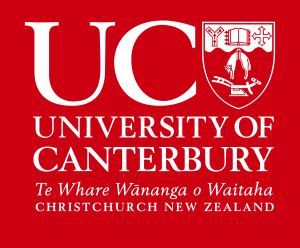Institute
Time & Place
Thu, 21 Nov 2019 13:00:27 NZDT in ER 263
Abstract
The Late Cretaceous to Early Paleocene Paparoa Formation of the Greymouth Basin exhibits alternating fluvial and lacustrine deposits and are accessible in outcrops and through extensive drillcores. An abundance of high quality coals of the Paparoa Formation has led most of the previous studies of the Greymouth Basin which are directly related to the characterization of coals. Thick alluvial conglomerate deposits in the northwest as well as thick organic rich lacustrine mudstones in the basin centre are relatively less studied. This research aims to study the non-coal bearing rocks of the Greymouth Basin to understand the tectonic evolution and the lacustrine sequence stratigraphy of the basin as well as its petroleum potential.
A detailed sedimentary facies analysis of the conglomerates and interbedded fine grained sediments found on the northwestern side of the Greymouth Rift Basin has identified and interpreted the presence of fan deltas alternating with alluvial fans. Facies distribution indicates that the thickness of the conglomeratic facies decreases from the northwest to the southeast suggesting that the primary basin-bounding fault of the Greymouth Rift Basin was located offshore to the northwest, probably between the offshore Haku-1 well and Twelve Mile Beach. This contradicts with the previous interpretation where the basin bounding fault was located in the east. Detailed sedimentary facies analysis of the finer grained, non-coal-bearing rocks of the Paparoa Formation suggests a number of organic-rich facies in the Greymouth Basin. Among these, the lacustrine facies association has the highest petroleum potential as indicated by the dark colour, and the presence of leaf and fresh water fossils. Geochemical analysis of the petroleum potential of the lacustrine mudstones indicates that the older Ford and Waiomo members contain better source rock potential than the younger, yet more extensive Goldlight Member with TOC contents of up to 4.5% and kerogen types that are capable of generating both oil and gas. The overall facies distribution of the conglomerates and the fine grained deposits suggests a half-graben geometry for the Greymouth Basin with the primary basin-bounding fault located to the north-west.
Better mapping of shoreline and shallow subaqueous facies has led to revised isopach maps and cross-sections allowing interpretation of the basin’s tectonic development through time. Results show that conglomerate and lacustrine facies isopach maps have an overall NNE-SSW orientation, indicating no change in basin orientation through time contradicting previous interpretations for the basin. Understanding the fault construction and the evolution history of the Greymouth Basin, it is concluded that the Greymouth Basin evolved from small sub-basins that widened and deepened through time via small-displacement normal fault segments. Normal fault segments became more connected as the sub-basins amalgamated until they formed a major border fault. Lacustrine sequence stratigraphy of the Greymouth Basin records a developing rift sequence where faults amalgamated as the basin widened over time. Sequence boundary unconformities formed at the bases of newly initiated basins stepping north-westward with correlative lowstand system tracts (LST) in the older established, continually subsiding basin centres , followed by the deposition of transgressive system tracts (TST), highstand system tracts (HST) and regressive system tracts (RST). The sequence stratigraphic analysis suggests that tectonic activity was the primary factor controlling the cyclic variation between the fluvial and lacustrine deposits in the Greymouth Basin.
The analysis of sedimentary facies, sequence stratigraphy, and petroleum potentiality of the Greymouth Basin can be used as an analogue for deeply buried, Late Cretaceous rift basins in New Zealand, including the petroleum-rich Taranaki Basin. The detailed model of the tectonic evolution contributes to a better understanding of how the sedimentary basins of the West Coast-Taranaki Rift System formed.
Biography
Mrinmoy is a PhD candidate at University of Canterbury.
